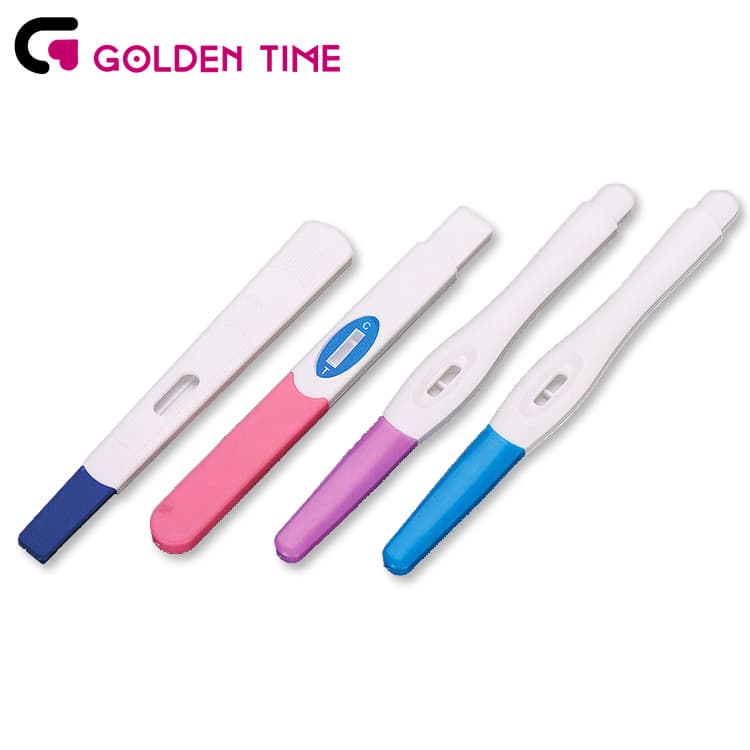Aug . 12, 2024 12:46 Back to list
Reliable home pregnancy test strips for accurate results and peace of mind when expecting
Understanding Accurate Pregnancy Test Strips A Comprehensive Guide
In today's fast-paced world, the anticipation and curiosity surrounding a potential pregnancy can be both exhilarating and nerve-wracking. For many, the first step in discovering whether they are expecting is through a pregnancy test, often using a pregnancy test strip. These strips have gained popularity due to their simplicity, affordability, and the ability to provide quick results from the comfort of home. However, it’s essential to understand how they work, their accuracy, and how to use them correctly.
What Are Pregnancy Test Strips?
Pregnancy test strips are thin pieces of plastic or paper treated with chemicals that react to hormones in urine. When a woman is pregnant, her body produces human chorionic gonadotropin (hCG), a hormone that can be detected in urine shortly after implantation occurs, usually about 6 to 14 days following conception. Most pregnancy test strips are designed to pick up hCG levels, allowing for a reliable early detection of pregnancy.
How to Use Pregnancy Test Strips
Using a pregnancy test strip is a straightforward process. First, ensure that the test strip is within its expiration date and read the instructions carefully. Here’s a step-by-step guide
1. Collect a Sample It’s best to use the first morning urine, which typically has the highest concentration of hCG. You can either urinate directly onto the strip or collect urine in a cup and dip the strip into it, depending on the product specifications.
2. Wait for Results After applying the urine to the strip, wait for a few minutes, usually around 3 to 5, as indicated in the instructions. During this time, the chemical reactions take place.
3. Read the Results The strip will display a control line and potentially a test line. If both lines appear, it indicates a positive result, meaning that hCG has been detected, and you are likely pregnant. If only the control line appears, the test is negative. If no lines appear, the test is invalid and needs to be redone.
accurate pregnancy test strip

Accuracy of Pregnancy Test Strips
One of the major factors to consider when using pregnancy test strips is their accuracy. Most home pregnancy tests boast an accuracy rate of over 99% when used correctly. However, several factors can impact this reliability
1. Timing Testing too early can yield false negatives, as the levels of hCG may not be high enough to detect. It's best to wait until the first day of a missed period for the most accurate results.
2. Dilution If the urine is too diluted, it can also lead to false negatives. This is why concentrating urine in the morning is often recommended.
3. Temperature and Storage Pregnancy test strips should be stored in a cool, dry place. Exposure to extreme temperatures or moisture can affect their effectiveness.
4. Expired Tests Always check the expiration date on the package, as using an expired test can produce inaccurate results.
Conclusion
Pregnancy test strips are a convenient, reliable means of early pregnancy detection, but it's essential to use them correctly to ensure accurate results. By understanding how these tests work, when to use them, and what factors can influence their reliability, individuals can approach the experience of pregnancy testing with confidence. Remember, regardless of the outcome, follow-up with a healthcare professional is crucial for confirming results and discussing the next steps.
-
Malaria Pf Ag Rapid Test Kit - Quick & Accurate Detection
NewsAug.11,2025
-
Accurate Cardiac Marker CK-MB Rapid Test for Quick Results
NewsAug.10,2025
-
Premium Empty ABS Plastic Cassette for Test Strips
NewsAug.09,2025
-
Sterile Urine Cup: Accurate Specimen Collection for Labs & Home
NewsAug.08,2025
-
Malaria Pf/Pan Ag Rapid Test Kit for Fast, Accurate Diagnosis
NewsAug.07,2025
-
Rapid Canine Corona Test: Fast & Accurate Results
NewsAug.06,2025

